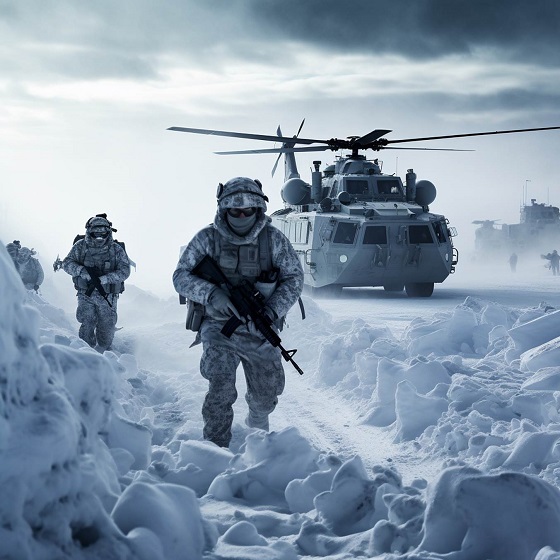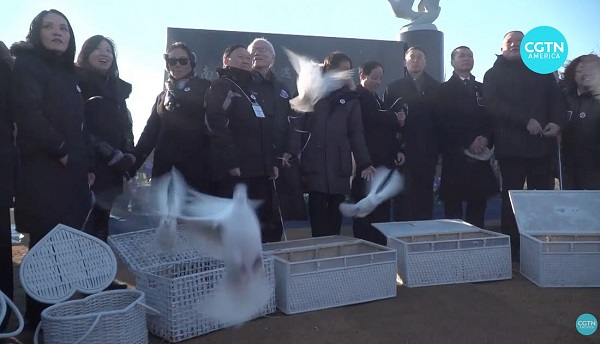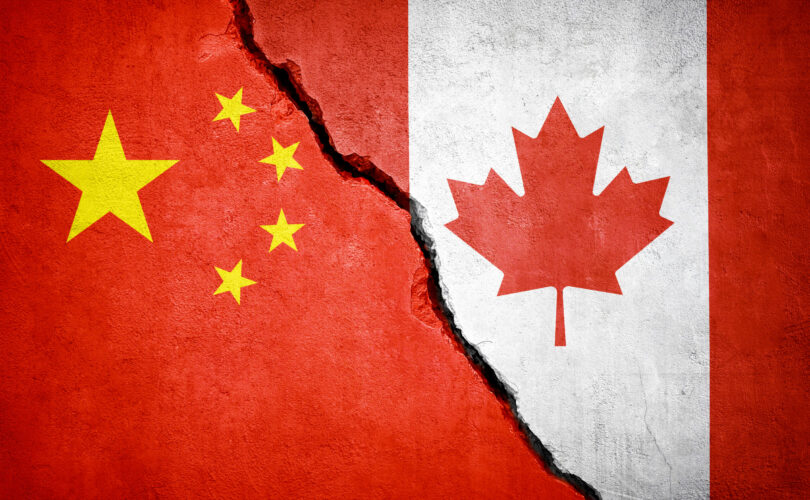Alberta
Start-up of Trans Mountain expansion ‘going very well’ as global buyers ink deals for Canadian crude

A worker at Trans Mountain’s Burnaby Terminal. Photo courtesy Trans Mountain Corporation
From the Canadian Energy Centre
Chinese refiner pays about US$10 more for oil off TMX compared to sales value in Alberta
Canada’s oil sands producers are “back in the limelight” for investors following completion of the Trans Mountain pipeline expansion, according to a report by Enervus Intelligence Research.
For the first time in the better part of a decade, there is now breathing room on the system to ship all of the oil producers are able to sell off the coast of B.C.
Up until this May, Trans Mountain was regularly overbooked. Not anymore.
The crude carrier Dubai Angel picked up the first shipment from the long-awaited expansion on May 22, setting sail for China and a customer of oil sands producer Suncor Energy.
Analysts estimate Trans Mountain loaded 20 vessels in June, compared to a pre-expansion average of five per month.
“You’re seeing multiple buyers. It’s going very well,” said Phil Skolnick, managing director of research with New York-based Eight Capital.
“You’re seeing the exact buyers that we always thought were going to show up, the U.S. west coast refineries and as well as the Asian refineries, and there was a shipment that went to India as well.”
 The “Golden Weld” in April 2024 marked the mechanical completion and end of construction for the Trans Mountain expansion project. Photo courtesy Trans Mountain Corporation
The “Golden Weld” in April 2024 marked the mechanical completion and end of construction for the Trans Mountain expansion project. Photo courtesy Trans Mountain Corporation
Canadian crude in demand on the global market
Asian markets – particularly China, where refineries can process “substantial quantities” of extra heavy crude and bitumen – are now “opened in earnest” to Canadian oil, the International Energy Agency (IEA) said in its June Oil 2024 report.
“There’s demand for this crude and people are going to make deals,” said Kevin Birn, chief analyst of Canadian oil markets with S&P Global.
The IEA said Canadian crude will increasingly compete with heavy oil from other countries, particularly those in Latin America and the Middle East.
June’s loading of 20 vessels is slightly lower than the 22 vessels Trans Mountain had targeted, but Skolnick said a few bumps in the project’s ramp-up are to be expected.
“About three months ago, the shippers were telling investors on their calls, don’t expect it to be a smooth ramp up, it’s going to be a bit bumpy, but I think they’re expecting by Q4 you should start seeing everyone at peak rates,” Skolnick said.
Delivering higher prices
Trans Mountain’s expanded Westridge Terminal at Burnaby, B.C. now has capacity to load 34 so-called “Aframax” vessels each month.
One of the first deals, with Chinese refiner Rongsheng Petrochemical, indicates the Trans Mountain expansion is delivering on one of its expected benefits – higher prices for Canadian oil.
Canada’s Parliamentary Budget Office has said that an increase of US$5 per barrel for Canadian heavy oil over one year would add $6 billion to Canada’s economy.
The June deal between Rongsheng and an unnamed oil sands shipper saw a shipment of Access Western Blend (AWB) purchased for approximately US$6 per barrel below the Brent global oil benchmark. That implies an AWB selling price of approximately US$75 per barrel, or about US$10 more than the price received for AWB in Alberta.
 Expanded export capacity at the Trans Mountain Westridge Terminal. Photo courtesy Trans Mountain Corporation
Expanded export capacity at the Trans Mountain Westridge Terminal. Photo courtesy Trans Mountain Corporation
More pipeline capacity needed
Oil sands production – currently about 3.4 million barrels per day – is projected to rise to 3.8 million barrels per day by the end of the decade before declining slightly to about 3.6 million barrels per day in 2035, according to the latest outlook by S&P Global.
“Despite the recent completion of the Trans Mountain Expansion project, additional capacity will still be needed, likely via expansion or optimization of the existing pipeline system,” wrote Birn and S&P senior research analyst Celina Hwang in May.
“By 2026, we forecast the need for further export capacity to ensure that the system remains balanced on pipeline economics.”
Uncertainty over the federal government’s proposed oil and gas emissions cap “adds hesitation” to companies considering large-scale production growth, wrote Birn and Hwang.
Global oil demand rising
World oil demand, which according to the IEA reached a record 103 million barrels per day in 2023, is projected to continue rising despite increased investment in renewable and alternative energy.
A June outlook by the International Energy Forum (IEF) pegs 2030 oil demand at nearly 110 million barrels per day.
“More investment in new oil and gas supply is needed to meet growing demand and maintain energy market stability, which is the foundation of global economic and social well-being,” said IEF secretary Joseph McMonigle.
Alberta
Alberta Next Panel calls to reform how Canada works

From the Fraser Institute
By Tegan Hill
The Alberta Next Panel, tasked with advising the Smith government on how the province can better protect its interests and defend its economy, has officially released its report. Two of its key recommendations—to hold a referendum on Alberta leaving the Canada Pension Plan, and to create a commission to review programs like equalization—could lead to meaningful changes to Canada’s system of fiscal federalism (i.e. the financial relationship between Ottawa and the provinces).
The panel stemmed from a growing sense of unfairness in Alberta. From 2007 to 2022, Albertans’ net contribution to federal finances (total federal taxes paid by Albertans minus federal money spent or transferred to Albertans) was $244.6 billion—more than five times the net contribution from British Columbians or Ontarians (the only other two net contributors). This money from Albertans helps keep taxes lower and fund government services in other provinces. Yet Ottawa continues to impose federal regulations, which disproportionately and negatively impact Alberta’s energy industry.
Albertans were growing tired of this unbalanced relationship. According to a poll by the Angus Reid Institute, nearly half of Albertans believe they get a “raw deal”—that is, they give more than they get—being part of Canada. The Alberta Next Panel survey found that 59 per cent of Albertans believe the federal transfer and equalization system is unfair to Alberta. And a ThinkHQ survey found that more than seven in 10 Albertans feel that federal policies over the past several years hurt their quality of life.
As part of an effort to increase provincial autonomy, amid these frustrations, the panel recommends the Alberta government hold a referendum on leaving the Canada Pension Plan (CPP) and establishing its own provincial pension plan.
Albertans typically have higher average incomes and a younger population than the rest of the country, which means they could pay a lower contribution rate under a provincial pension plan while receiving the same level of benefits as the CPP. (These demographic and economic factors are also why Albertans currently make such a large net contribution to the CPP).
The savings from paying a lower contribution rate could result in materially higher income during retirement for Albertans if they’re invested in a private account. One report found that if a typical Albertan invested the savings from paying a lower contribution rate to a provincial pension plan, they could benefit from $189,773 (pre-tax) in additional retirement income.
Clearly, Albertans could see a financial benefit from leaving the CPP, but there are many factors to consider. The government plans to present a detailed report including how the funds would be managed, contribution rates, and implementation plan prior to a referendum.
Then there’s equalization—a program fraught with flaws. The goal of equalization is to ensure provinces can provide reasonably comparable public services at reasonably comparable tax rates. Ottawa collects taxes from Canadians across the country and then redistributes that money to “have not” provinces. In 2026/27, equalization payments is expected to total $27.2 billion with all provinces except Alberta, British Columbia and Saskatchewan receiving payments.
Reasonable people can disagree on whether or not they support the principle of the program, but again, it has major flaws that just don’t make sense. Consider the fixed growth rate rule, which mandates that total equalization payments grow each year even when the income differences between recipient and non-recipient provinces narrows. That means Albertans continue paying for a growing program, even when such growth isn’t required to meet the program’s stated objective. The panel recommends that Alberta take a leading role in working with other provinces and the federal government to reform equalization and set up a new Canada Fiscal Commission to review fiscal federalism more broadly.
The Alberta Next Panel is calling for changes to fiscal federalism. Reforms to equalization are clearly needed—and it’s worth exploring the potential of an Alberta pension plan. Indeed, both of these changes could deliver benefits.
Alberta
Alberta project would be “the biggest carbon capture and storage project in the world”

Pathways Alliance CEO Kendall Dilling is interviewed at the World Petroleum Congress in Calgary, Monday, Sept. 18, 2023.THE CANADIAN PRESS/Jeff McIntosh
From Resource Works
Carbon capture gives biggest bang for carbon tax buck CCS much cheaper than fuel switching: report
Canada’s climate change strategy is now joined at the hip to a pipeline. Two pipelines, actually — one for oil, one for carbon dioxide.
The MOU signed between Ottawa and Alberta two weeks ago ties a new oil pipeline to the Pathways Alliance, which includes what has been billed as the largest carbon capture proposal in the world.
One cannot proceed without the other. It’s quite possible neither will proceed.
The timing for multi-billion dollar carbon capture projects in general may be off, given the retreat we are now seeing from industry and government on decarbonization, especially in the U.S., our biggest energy customer and competitor.
But if the public, industry and our governments still think getting Canada’s GHG emissions down is a priority, decarbonizing Alberta oil, gas and heavy industry through CCS promises to be the most cost-effective technology approach.
New modelling by Clean Prosperity, a climate policy organization, finds large-scale carbon capture gets the biggest bang for the carbon tax buck.
Which makes sense. If oil and gas production in Alberta is Canada’s single largest emitter of CO2 and methane, it stands to reason that methane abatement and sequestering CO2 from oil and gas production is where the biggest gains are to be had.
A number of CCS projects are already in operation in Alberta, including Shell’s Quest project, which captures about 1 million tonnes of CO2 annually from the Scotford upgrader.
What is CO2 worth?
Clean Prosperity estimates industrial carbon pricing of $130 to $150 per tonne in Alberta and CCS could result in $90 billion in investment and 70 megatons (MT) annually of GHG abatement or sequestration. The lion’s share of that would come from CCS.
To put that in perspective, 70 MT is 10% of Canada’s total GHG emissions (694 MT).
The report cautions that these estimates are “hypothetical” and gives no timelines.
All of the main policy tools recommended by Clean Prosperity to achieve these GHG reductions are contained in the Ottawa-Alberta MOU.
One important policy in the MOU includes enhanced oil recovery (EOR), in which CO2 is injected into older conventional oil wells to increase output. While this increases oil production, it also sequesters large amounts of CO2.
Under Trudeau era policies, EOR was excluded from federal CCS tax credits. The MOU extends credits and other incentives to EOR, which improves the value proposition for carbon capture.
Under the MOU, Alberta agrees to raise its industrial carbon pricing from the current $95 per tonne to a minimum of $130 per tonne under its TIER system (Technology Innovation and Emission Reduction).
The biggest bang for the buck
Using a price of $130 to $150 per tonne, Clean Prosperity looked at two main pathways to GHG reductions: fuel switching in the power sector and CCS.
Fuel switching would involve replacing natural gas power generation with renewables, nuclear power, renewable natural gas or hydrogen.
“We calculated that fuel switching is more expensive,” Brendan Frank, director of policy and strategy for Clean Prosperity, told me.
Achieving the same GHG reductions through fuel switching would require industrial carbon prices of $300 to $1,000 per tonne, Frank said.
Clean Prosperity looked at five big sectoral emitters: oil and gas extraction, chemical manufacturing, pipeline transportation, petroleum refining, and cement manufacturing.
“We find that CCUS represents the largest opportunity for meaningful, cost-effective emissions reductions across five sectors,” the report states.

Fuel switching requires higher carbon prices than CCUS.
Measures like energy efficiency and methane abatement are included in Clean Prosperity’s calculations, but again CCS takes the biggest bite out of Alberta’s GHGs.
“Efficiency and (methane) abatement are a portion of it, but it’s a fairly small slice,” Frank said. “The overwhelming majority of it is in carbon capture.”

From left, Alberta Minister of Energy Marg McCuaig-Boyd, Shell Canada President Lorraine Mitchelmore, CEO of Royal Dutch Shell Ben van Beurden, Marathon Oil Executive Brian Maynard, Shell ER Manager, Stephen Velthuizen, and British High Commissioner to Canada Howard Drake open the valve to the Quest carbon capture and storage facility in Fort Saskatchewan Alta, on Friday November 6, 2015. Quest is designed to capture and safely store more than one million tonnes of CO2 each year an equivalent to the emissions from about 250,000 cars. THE CANADIAN PRESS/Jason Franson
Credit where credit is due
Setting an industrial carbon price is one thing. Putting it into effect through a workable carbon credit market is another.
“A high headline price is meaningless without higher credit prices,” the report states.
“TIER credit prices have declined steadily since 2023 and traded below $20 per tonne as of November 2025. With credit prices this low, the $95 per tonne headline price has a negligible effect on investment decisions and carbon markets will not drive CCUS deployment or fuel switching.”
Clean Prosperity recommends a kind of government-backstopped insurance mechanism guaranteeing carbon credit prices, which could otherwise be vulnerable to political and market vagaries.
Specifically, it recommends carbon contracts for difference (CCfD).
“A straight-forward way to think about it is insurance,” Frank explains.
Carbon credit prices are vulnerable to risks, including “stroke-of-pen risks,” in which governments change or cancel price schedules. There are also market risks.
CCfDs are contractual agreements between the private sector and government that guarantees a specific credit value over a specified time period.
“The private actor basically has insurance that the credits they’ll generate, as a result of making whatever low-carbon investment they’re after, will get a certain amount of revenue,” Frank said. “That certainty is enough to, in our view, unlock a lot of these projects.”
From the perspective of Canadian CCS equipment manufacturers like Vancouver’s Svante, there is one policy piece still missing from the MOU: eligibility for the Clean Technology Manufacturing (CTM) Investment tax credit.
“Carbon capture was left out of that,” said Svante co-founder Brett Henkel said.
Svante recently built a major manufacturing plant in Burnaby for its carbon capture filters and machines, with many of its prospective customers expected to be in the U.S.
The $20 billion Pathways project could be a huge boon for Canadian companies like Svante and Calgary’s Entropy. But there is fear Canadian CCS equipment manufacturers could be shut out of the project.
“If the oil sands companies put out for a bid all this equipment that’s needed, it is highly likely that a lot of that equipment is sourced outside of Canada, because the support for Canadian manufacturing is not there,” Henkel said.
Henkel hopes to see CCS manufacturing added to the eligibility for the CTM investment tax credit.
“To really build this eco-system in Canada and to support the Pathways Alliance project, we need that amendment to happen.”
Resource Works News
-

 Digital ID19 hours ago
Digital ID19 hours agoCanadian government launches trial version of digital ID for certain licenses, permits
-

 Agriculture21 hours ago
Agriculture21 hours agoEnd Supply Management—For the Sake of Canadian Consumers
-

 Alberta18 hours ago
Alberta18 hours agoAlberta Next Panel calls to reform how Canada works
-

 International13 hours ago
International13 hours agoGeorgia county admits illegally certifying 315k ballots in 2020 presidential election
-
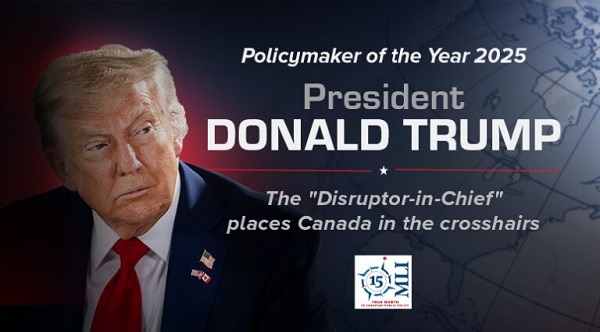
 Business16 hours ago
Business16 hours agoThe “Disruptor-in-Chief” places Canada in the crosshairs
-

 Artificial Intelligence17 hours ago
Artificial Intelligence17 hours agoUK Police Pilot AI System to Track “Suspicious” Driver Journeys
-

 Energy12 hours ago
Energy12 hours ago‘The electric story is over’
-
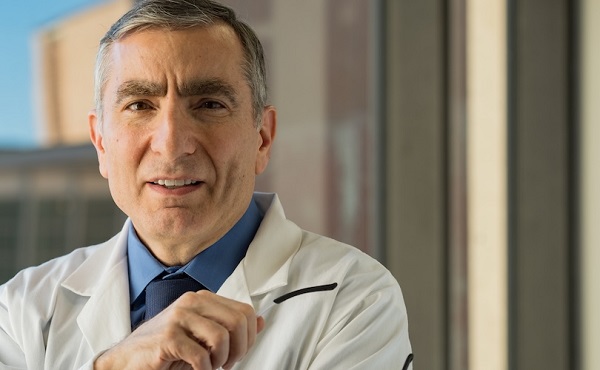
 International20 hours ago
International20 hours agoWorld-leading biochemist debunks evolutionary theory




